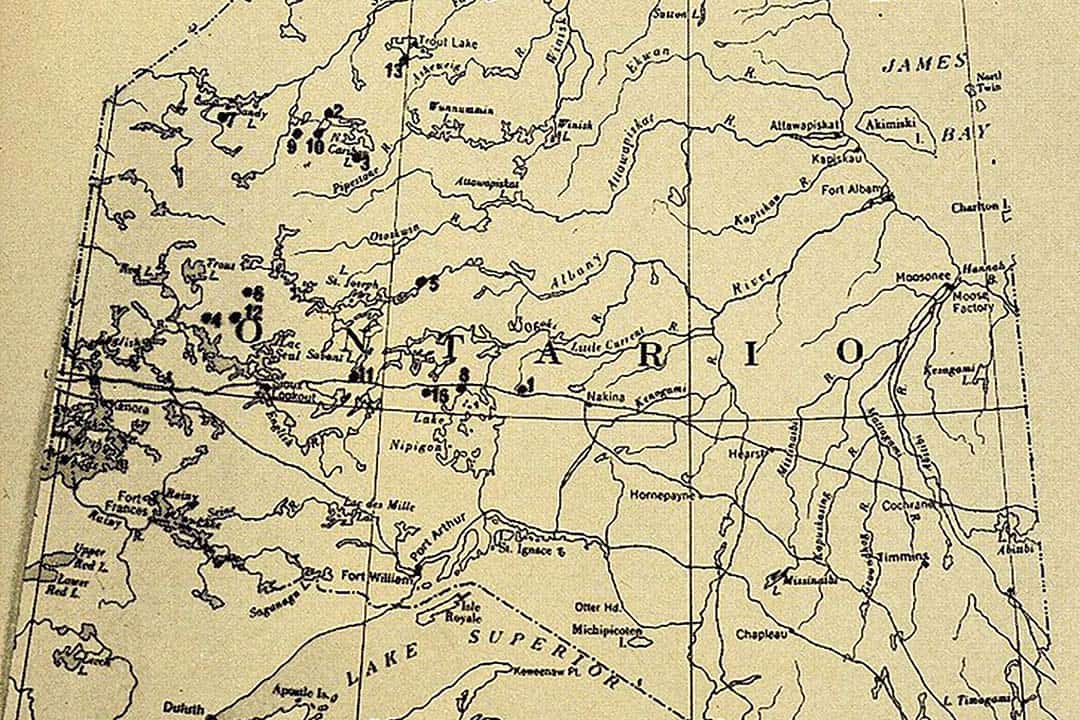On January 25, Mariana Valverde — a professor emeritus with U of T’s Centre for Criminology and Sociolegal Studies — and Brian Gettler — an associate professor at UTM’s Department of Historical Studies — presented their research on the material history of U of T’s lands at a public lecture held at the Canadiana Gallery.
Their research found that the university acquired almost 226,000 acres of land from the Crown in 1827, which they sold for almost $43 million in today’s currency. In addition, U of T’s efforts to develop the lands allocated to UTM sparked disputes between the university and local homeowners.
Valverde and Gettler’s research is part of a nationwide effort to investigate how settlers used dispossessed, stolen, and unceded Indigenous lands to finance the development of universities in Canada.
Their lecture is part of the CrimSL Speaker Series, hosted by U of T’s Centre for Criminology and Sociolegal Studies. According to the centre’s website, the speaker series aims to expose students to topics, research methodologies, and theoretical perspectives in criminology and sociolegal studies.
U of T’s original endowment lands
Valverde’s research focuses on U of T’s original endowment lands and how much U of T profited from the sale of these lands. Endowment capital refers to money or property given to U of T, which U of T typically invests to generate income.
Valverde explained that the governments of most settler-colonies such as Canada were “cash poor but land rich,” meaning that they did not have enough money to directly finance educational institutions but possessed an abundance of land. “Of course,” Valverde said, “these lands were taken from Indigenous peoples.”
Valverde found that, in 1828, the government gave King’s College — the precursor to U of T — almost 226,000 acres of land that the Crown had seized. It repeatedly instructed U of T to sell these lands — particularly to settler farmers — as a way to generate revenue and fund the university.
These lands did not come in one piece, Valverde found. At the lecture, she presented historic maps showing that U of T’s original endowment included land in the townships of York, Monaghan, and Haldimand, among others.
However, Valverde said that U of T’s current endowment funds are not likely from the original endowment land package. That is because, by 1861, U of T had already sold the majority of the original endowment lands, generating almost $1.4 million — amounting to almost $43 million in today’s currency.
Valverde cited a 1906 report from the Royal Commission on the University of Toronto, which stated that, “throughout North America little in the financial history of universities has been more noticeable than the good effect of large grants of wild land.” As such, the commissioners recommended that the government give U of T a total of at least one million acres of land.
While Valverde could not determine whether this additional endowment ever took place, she wanted to illustrate “the sense of entitlement” settlers felt toward Indigenous lands.
Disputes over UTM land development
Gettler’s research explored UTM’s founding during the postwar boom of university-building. He found that, in the 1960s, U of T’s board of governors passed a bylaw granting them the ability to expropriate or seize property. U of T tried to expropriate homeowners near UTM’s lands in order to develop the UTM campus. However, on June 28, 1965, U of T cancelled its expropriation plans due to pushback from local homeowners.
Gettler also found that the U of T committee in charge of planning the satellite campuses had conflicts of interest. For instance, the committee included land and property developers who U of T later hired to develop newly bought lands for the satellite campuses.
In an interview with The Varsity, Gettler noted the “tightly knit connections between for-profit corporations and the university” that he found in his research. He also explained that the news at the time often reported on the disputes over UTM’s development. “Yet, we don’t know about them [now],” Valverde said.
A nationwide research effort
Valverde told The Varsity that their work is part of a nationwide research project that aims to create a public history website documenting how Indigenous dispossession funded Canadian universities. According to Valverde, the project started “very informally,” right before the onset of the COVID-19 pandemic. She began working with two other professors based in Vancouver and estimates that the effort now includes around 12 to 15 researchers from institutions including the University of British Columbia, Simon Fraser University, University of Victoria, and Saint Mary’s University.
Currently, the research team is preparing to apply for a grant so they can create the website. Valverde said that the National Centre for Truth and Reconciliation in Winnipeg already agreed to host the website.
Along a similar vein, historian Robert Lee and journalist Tristan Ahtone conducted the US Land-Grab Universities investigation. They examined how the US funded 52 universities with nearly 11 million acres of dispossessed Indigenous lands.
Beyond the website, Valverde said, “It’s up to Indigenous students, faculty, and nations that have been affected by the land grab to think about… what they might need or want.”
Editor’s note (February 4): A previous version of this article incorrectly stated that U of T may own endowment lands not continuous with the original package. It has been corrected to show that U of T’s current endowment capital may not include funds originating from the sale of original endowment lands.


